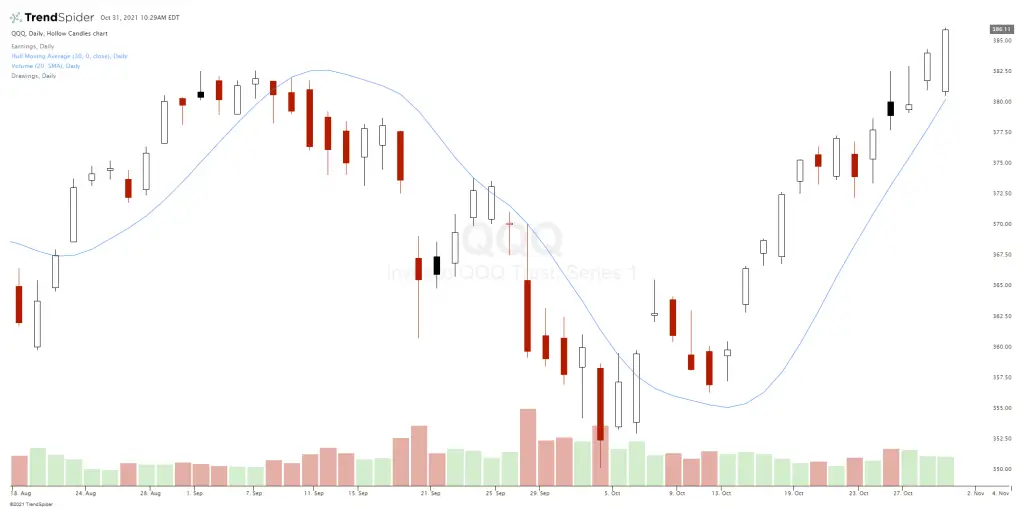The Hull moving average was developed by Alan Hull as he tried to improve on the weighted moving averages and others for smoother trend and swing signals during a charts trends and swings in price action. The HMA uses weighted moving averages and dampens the smoothing effect and resulting lag by using the square root of the period instead of the actual period itself.
The Hull Moving Average (HMA) formula:
Integer(SquareRoot(Period)) WMA [2 x Integer(Period/2) WMA(Price) – Period WMA(Price)]
The Hull Moving Average (HMA) is a moving average indicator that is designed to have less lag time and more responsiveness to price action, as well as less noise and decrease the amount of false signals that occur with other types of moving averages like the SMA, EMA, and WMA. Swing traders and trend traders can use this indicator to quantify the price action trend on a chart for different time frames. It can also be used in the backtesting of historical data to quantify entry and exit signals with an edge.
The simplest and best use for the HMA due to its ability to smooth trend and swing identification is to employ it at the turning points in a move as an entry or exit signal in trading. Hull recommends that it shouldn’t be used to create crossover signals on a chart as that technique relies on lag and the HMA is designed to reduce or eliminate the majority of lag by its formulaic structure. [1]
